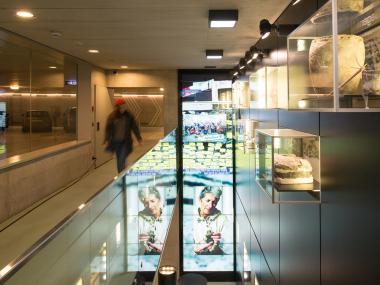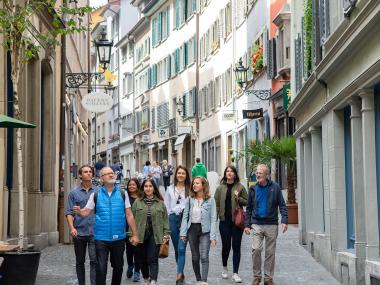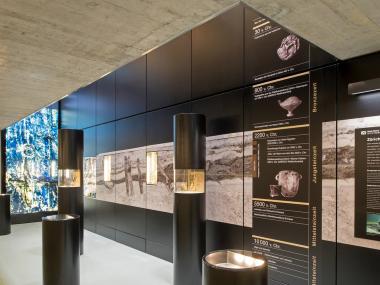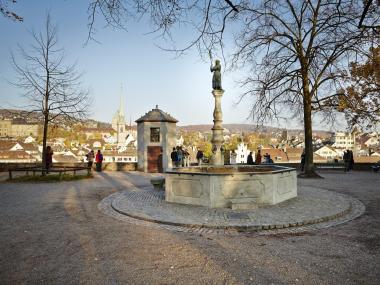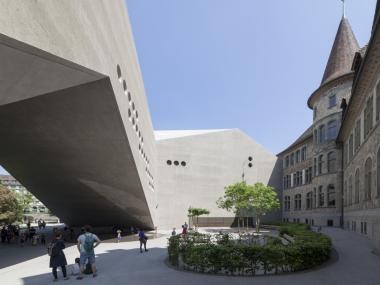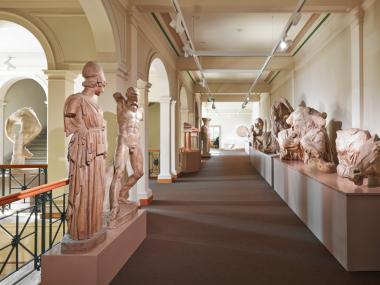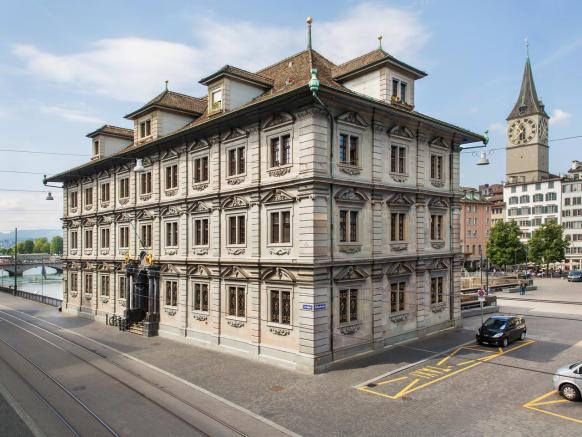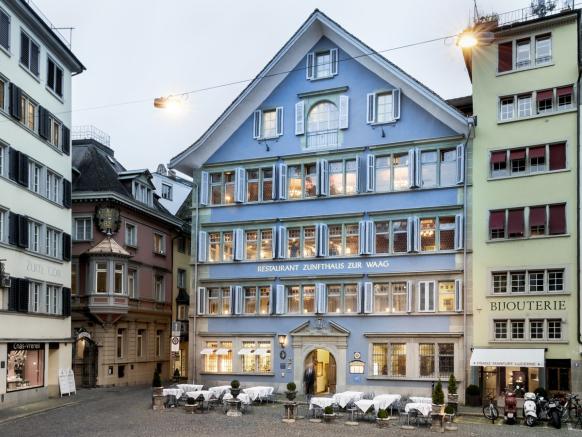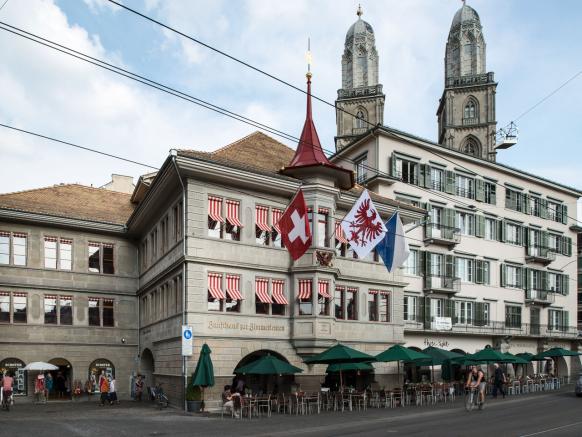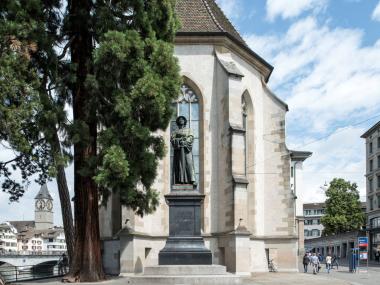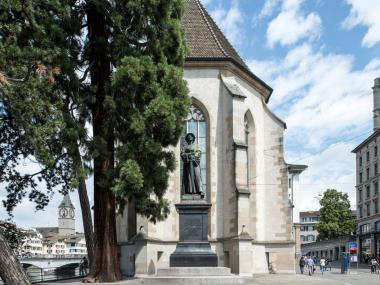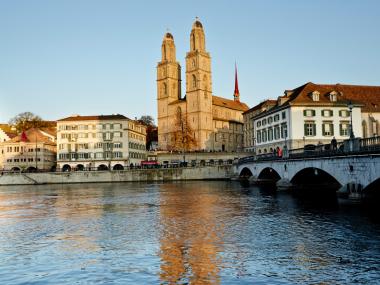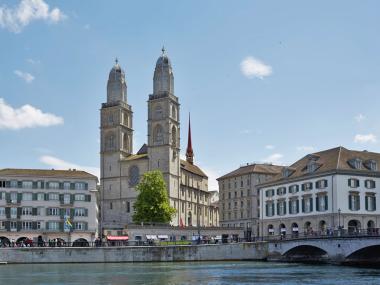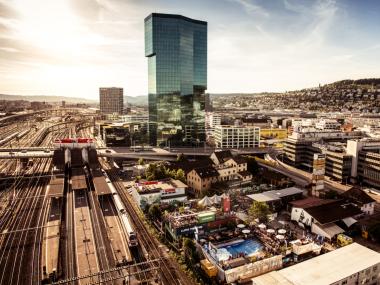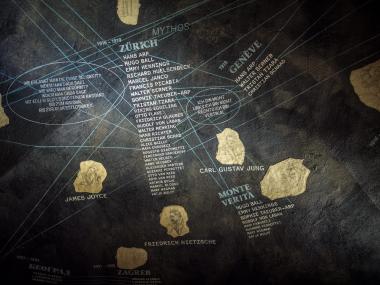A Brief History of Zurich
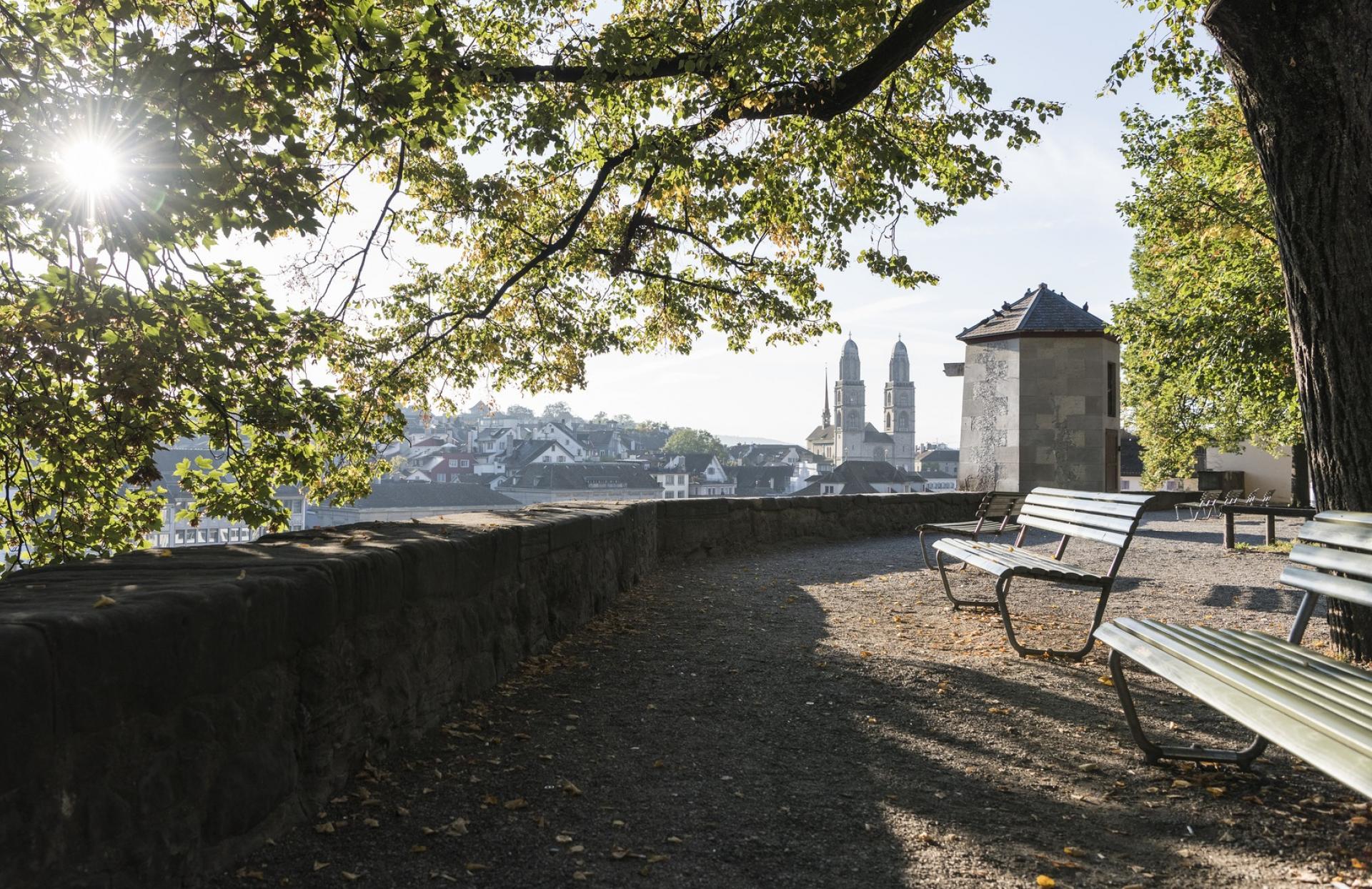
Early Middle Ages
According to legend, in the 8th century, Charlemagne rediscovered the tombs of the patron saints of Zurich, Felix and Regula. While out hunting, he was pursuing a stag from Aachen to Zurich when his horse suddenly fell to its knees to pay homage to the saints’ tombs. Charlemagne subsequently had the bones exhumed and he founded the church and the provostry of the Grossmünster in their honor.
In 853 AD, Charlemagne’s grandson, Louis the German, built a “Pfalz”, or palace, on the Lindenhof and gave an existing women’s convent with its own jurisdiction as a gift to his eldest daughter, Hildegard. Thus the Fraumünster abbey was founded.
Zurich prospered in the 11th and 12th centuries thanks to the Fraumünster, which as a convent for aristocratic women attracted princesses from all over Europe. Under the Frankish kings, Zurich also grew to become the most important market town, with trade connections reaching from northern Italy to Holland. Thanks to the relics of Zurich’s patron saints, Felix and Regula, the city was also an important pilgrimage site.
In 1218, Zurich gained its freedom from the Empire after the extinction of the main line of the Zähringer family, the imperial bailiffs responsible for Zurich. Zurich was placed under the direct control of the emperor, but was allowed to govern itself.
Late Middle Ages
In 1336, Rudolf Brun and the tradesmen of the city stormed the Town Hall. From this time on, the council no longer consisted only of aristocrats; half of it was made up of tradesmen, who organized themselves into guilds.
In 1351, 60 years after the founding of the Helvetic Confederation, Zürich was the sixth canton to join.
Modern Age
In 1648, the Peace Treaty of Westphalia granted the Confederation independence from the Holy Roman Empire of the German Nation.
During the age of industrialization in the late 18th and 19th centuries, Zürich changed from a city of tradesmen to a capital of machine-driven industry.
After World War II, 70% of the workforce was already active in the service sector. Restaurants, bars, galleries and shops took up residence in former factory halls. Now, at the beginning of the 21st century, the former industrial districts have become the trendy districts in Zürich.
In past years, Zürich has repeatedly been chosen as the city with the highest quality of life in the world.
